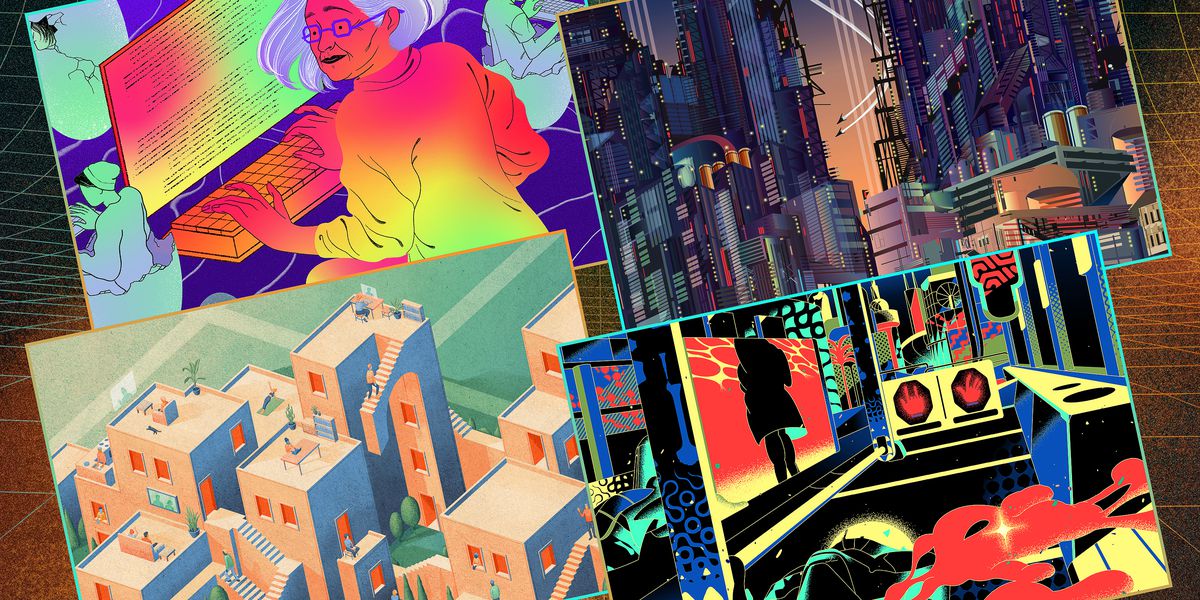In the dynamic landscape of commerce, the term “Consumer Goods and Services” encompasses a vast array of products and experiences that individuals purchase for their personal use or consumption. This article delves into the intricacies of this expansive market, exploring its evolution, categories, and the factors that shape consumer behavior.
Evolution of Consumer Goods
The journey of consumer goods from ancient barter systems to the current era of advanced technology is a testament to human innovation. Technological advancements have not only transformed the nature of goods but also the way consumers access and interact with them.
Categories of Consumer Goods
Consumer goods are broadly classified into durable goods, non-durable goods, and services. Durable goods, like electronics and appliances, have a longer lifespan, while non-durable goods, such as food and toiletries, are consumed relatively quickly. Services, on the other hand, involve intangible experiences, such as healthcare or education.
Consumer Behavior in the Goods and Services Market
Understanding consumer behavior is pivotal for businesses. Various factors, including cultural influences, economic conditions, and personal preferences, play a role in shaping purchasing decisions. Recognizing these trends allows companies to tailor their strategies to meet consumer demands effectively.
The Impact of E-Commerce on Consumer Goods
The rise of e-commerce has revolutionized the consumer goods landscape. Online shopping provides convenience and a vast array of options, leading to a shift in consumer habits. Businesses need to adapt to this digital age by establishing a robust online presence and optimizing the customer’s online shopping experience.
Challenges in the Consumer Goods Industry
Despite its vast opportunities, the consumer goods industry faces challenges such as fierce competition, supply chain disruptions, and increasing concerns about sustainability. Navigating these hurdles requires strategic planning and innovative solutions.
Innovation and Trends in Consumer Goods
Innovation is a driving force in the consumer goods sector. Companies continually seek to enhance products and services, incorporating sustainability practices and staying attuned to market trends. This ensures they remain competitive and meet the evolving needs of consumers.
Globalization in Consumer Goods

The globalization of consumer goods markets has expanded opportunities for businesses to reach wider audiences. Cultural influences play a significant role in shaping consumer preferences, prompting companies to adopt flexible and culturally sensitive marketing strategies.
The Role of Marketing in Consumer Goods and Services
Effective marketing is crucial in a saturated market. Brands invest in strategic branding, utilizing digital marketing tools and embracing emerging trends to connect with their target audience. The ability to create a compelling brand narrative contributes to consumer trust and loyalty.
Customer Experience in the Consumer Goods Industry
Positive customer experiences are instrumental in building brand loyalty. From the ease of online shopping to responsive customer service, businesses need to prioritize customer satisfaction. A satisfied customer is more likely to become a repeat customer and a brand advocate.
Sustainability Practices in Consumer Goods
As environmental concerns escalate, consumer goods companies are adopting sustainable practices. Eco-friendly packaging, ethical sourcing, and corporate responsibility are becoming integral components of business strategies, reflecting a growing demand for environmentally conscious products.
Consumer Protection and Rights
Legal frameworks safeguard consumer rights. Understanding and adhering to these regulations is vital for businesses to build trust with consumers. Ethical business practices and transparency contribute to a positive public image.
Future Outlook of Consumer Goods and Services
The future of consumer goods and services lies in embracing emerging technologies, adapting to shifting market dynamics, and fostering innovation. Businesses that stay agile and forward-thinking will be better positioned to navigate the challenges and opportunities that lie ahead.
Future Outlook of Consumer Goods and Services
Consumer goods and services have always been at the heart of economic activity, shaping the way individuals interact with the market. In this ever-evolving landscape, it’s crucial to delve into the future outlook of consumer goods and services, considering the dynamic factors influencing the industry.
Consumer goods encompass a vast array of products individuals purchase for personal use, while services are intangible offerings contributing to a person’s well-being. Understanding this intersection is vital to predicting the future of the industry.
Importance in the Market
Consumer goods and services play a pivotal role in the global economy, driving demand and shaping market trends. The sector’s adaptability is essential as it navigates through various challenges and opportunities.
Evolution of Consumer Goods and Services
Historical Perspective
The industry has undergone significant transformations over the years, from local marketplaces to global supply chains. Examining the historical context provides insights into the sector’s resilience.
Technological Advancements
In recent decades, technological advancements have reshaped the consumer goods and services landscape. The integration of digital platforms and automation has streamlined processes and enhanced efficiency.
Current Trends in the Consumer Goods and Services Industry
E-commerce Dominance
The rise of e-commerce has revolutionized the way consumers access goods and services. The convenience of online shopping has led to a paradigm shift in consumer behavior, influencing market strategies.
Sustainable Practices
Environmental consciousness has become a driving force in consumer choices. Companies embracing sustainable practices not only contribute to a healthier planet but also attract a growing segment of environmentally conscious consumers.
Emerging Technologies Shaping the Future

Artificial Intelligence
Artificial Intelligence (AI) is poised to play a transformative role in consumer goods and services. From personalized recommendations to predictive analytics, AI enhances the customer experience and informs strategic decision-making.
Internet of Things (IoT)
The IoT connects devices and enables data exchange, fostering a more interconnected consumer experience. Smart homes and wearable tech are just glimpses into the potential of IoT in shaping the future consumer landscape.
Augmented Reality
Augmented Reality (AR) offers immersive experiences, allowing consumers to visualize products before purchasing. This technology not only enhances the shopping experience but also opens new avenues for marketing strategies.
Impact of Changing Consumer Behavior
Personalization
Consumers increasingly seek personalized experiences. Brands that can tailor their offerings to individual preferences stand to gain a competitive edge in the market.
Sustainability Preferences
The shift towards sustainability is influencing consumer choices. Companies adopting eco-friendly practices and transparent supply chains are likely to resonate with an environmentally conscious audience.
Conclusion
Consumer goods and services form the backbone of our daily lives, influencing how we live, work, and interact. Navigating this dynamic market requires a keen understanding of consumer behavior, a commitment to innovation, and a dedication to meeting the evolving needs of a diverse and discerning audience.
FAQs
- What are consumer goods and services?
- Consumer goods are products individuals purchase for personal use, while services involve intangible experiences.
- How has e-commerce impacted consumer goods?
- E-commerce has revolutionized the market, providing convenience and influencing consumer habits.
- What challenges does the consumer goods industry face?
- Challenges include competition, supply chain disruptions, and sustainability concerns.
- Why is sustainability important in consumer goods?
- Sustainability reflects a growing demand for environmentally conscious products and ethical business practices.
- What is the future outlook for consumer goods and services?
- The future lies in embracing emerging technologies, adapting to market shifts, and fostering innovation.

